With the Neolithic Revolution, the first radical transformation of the way of life of humanity takes place, going from being nomadic to sedentary and from having a collecting economy (hunting, fishing and gathering) to a producer (agriculture and livestock). The development of agriculture and livestock allowed the development of the first stable population centers and the construction of structures that allowed community life. This agricultural revolution entails, in addition to the "domestication" of the plant and animal world, the manipulation of species to adapt them to human consumption. In fact, the fruits and vegetables that we buy in greengrocers or supermarkets are practically nothing like those that our ancestors grew thousands of years ago.
For example, the wild banana was first cultivated 7,000 years ago in Papua New Guinea and contained large, hard seeds inside and was much greener in color than it is today. Today, bananas have been genetically manipulated and the result is a fruit with imperceptible seeds, better flavor, more nutrients and a much more striking color.
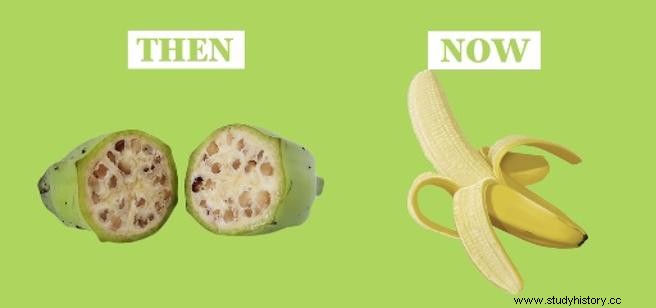
Watermelons, which have their origin in Africa, became a very common food after 1600. The appearance they had then was very different from today. Its interior was green and with larger seeds. Today, watermelons look much fresher and juicier, and their insides have turned red.
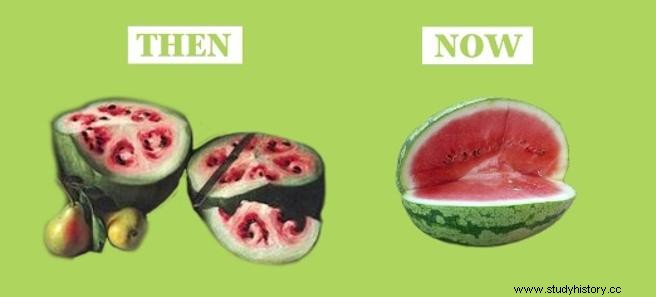
In the field of vegetables, aubergines are the ones that have evolved the most in terms of shape and colour. And it is that throughout its history, they have been white, blue, light blue, purple and yellow. The first ones were cultivated in China and Africa and, in addition, they had thorns. And, little by little, this crop has gotten rid of the thorns and has transformed into the large, purple vegetable that we find in supermarkets.
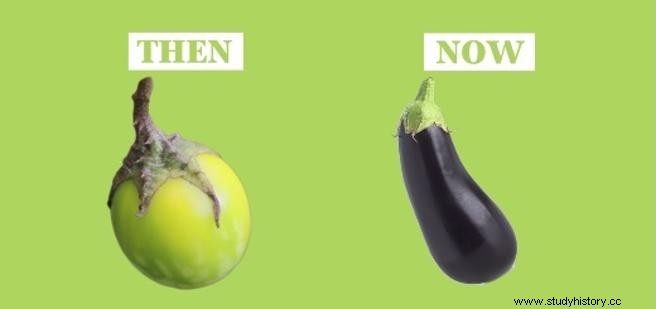
The yellow and juicy corn that we can find in greengrocers has little to do with that green and dry plant, of little edible appearance, which was cultivated for the first time in the year 7,000 BC. The domestication of corn was started by the inhabitants of Central America – possibly the Mayans – from teosinte (it is the before photo). The variety of grains on the cob had already been brought to Europe and its cultivation and consumption had to be adapted, because it was responsible for a disease called pellagra.
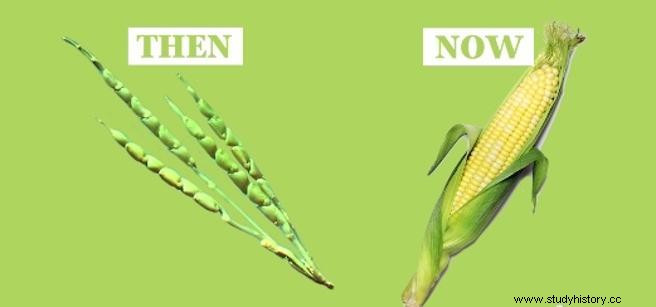
As a more radical example, carrots. The first known ones were cultivated in the 10th century in Persia and Asia Minor. Originally they should have been purple or white, with a fine, forked root, but over time they lost the purple pigment and turned yellow. Humans worked on these thin, white roots and, through genetic and chemical changes, turned them into the big, orange carrots of today.
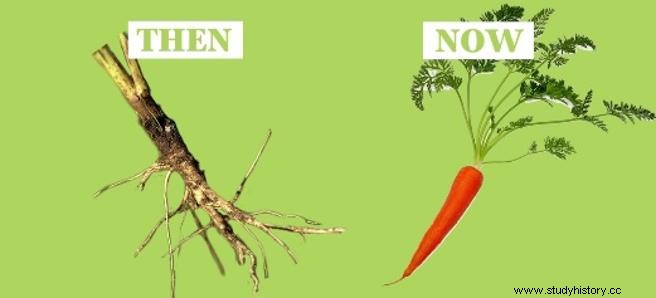
So the next time someone tells you that we shouldn't be eating foods that have been genetically modified, you can tell them that we already are.
